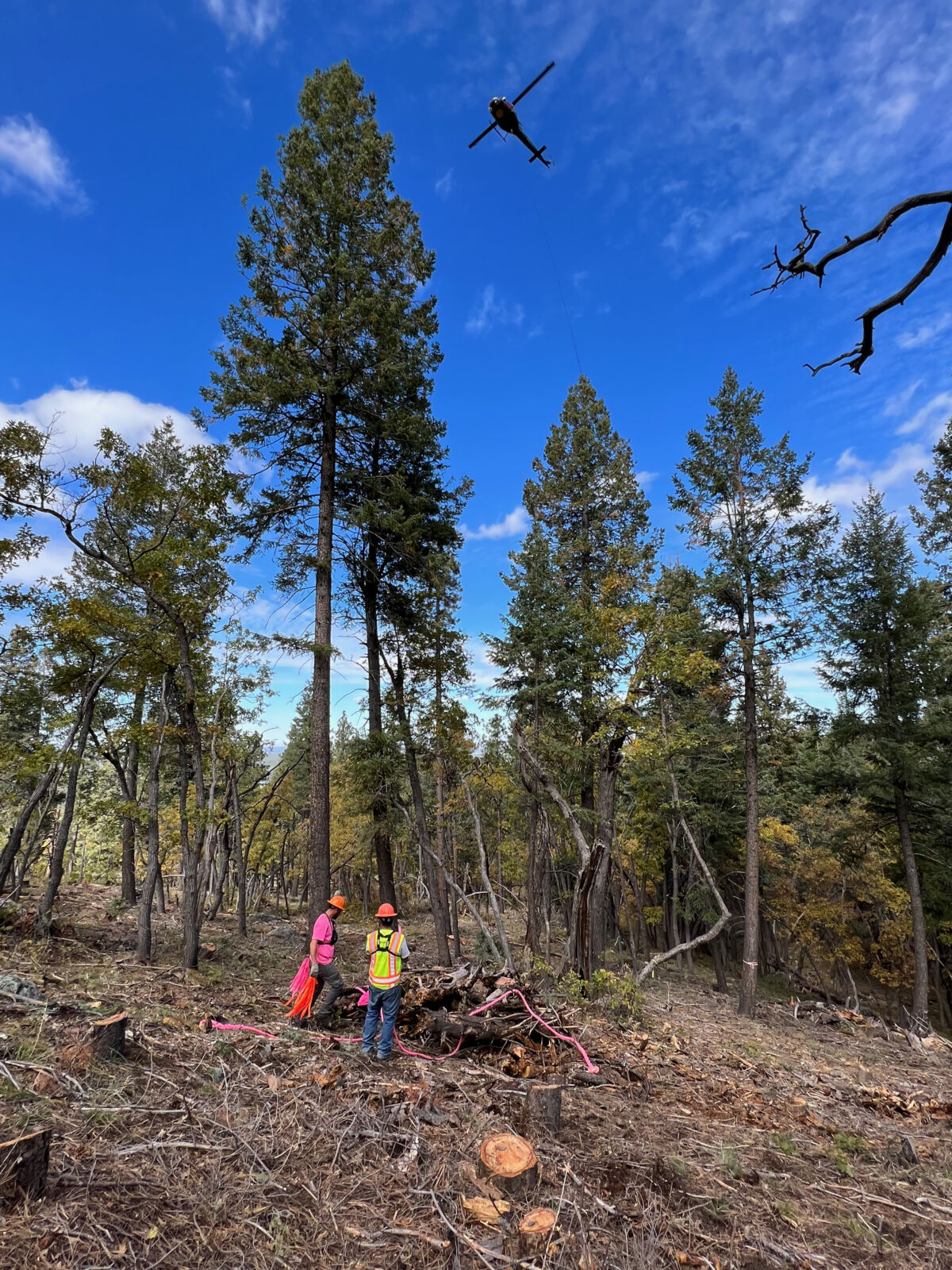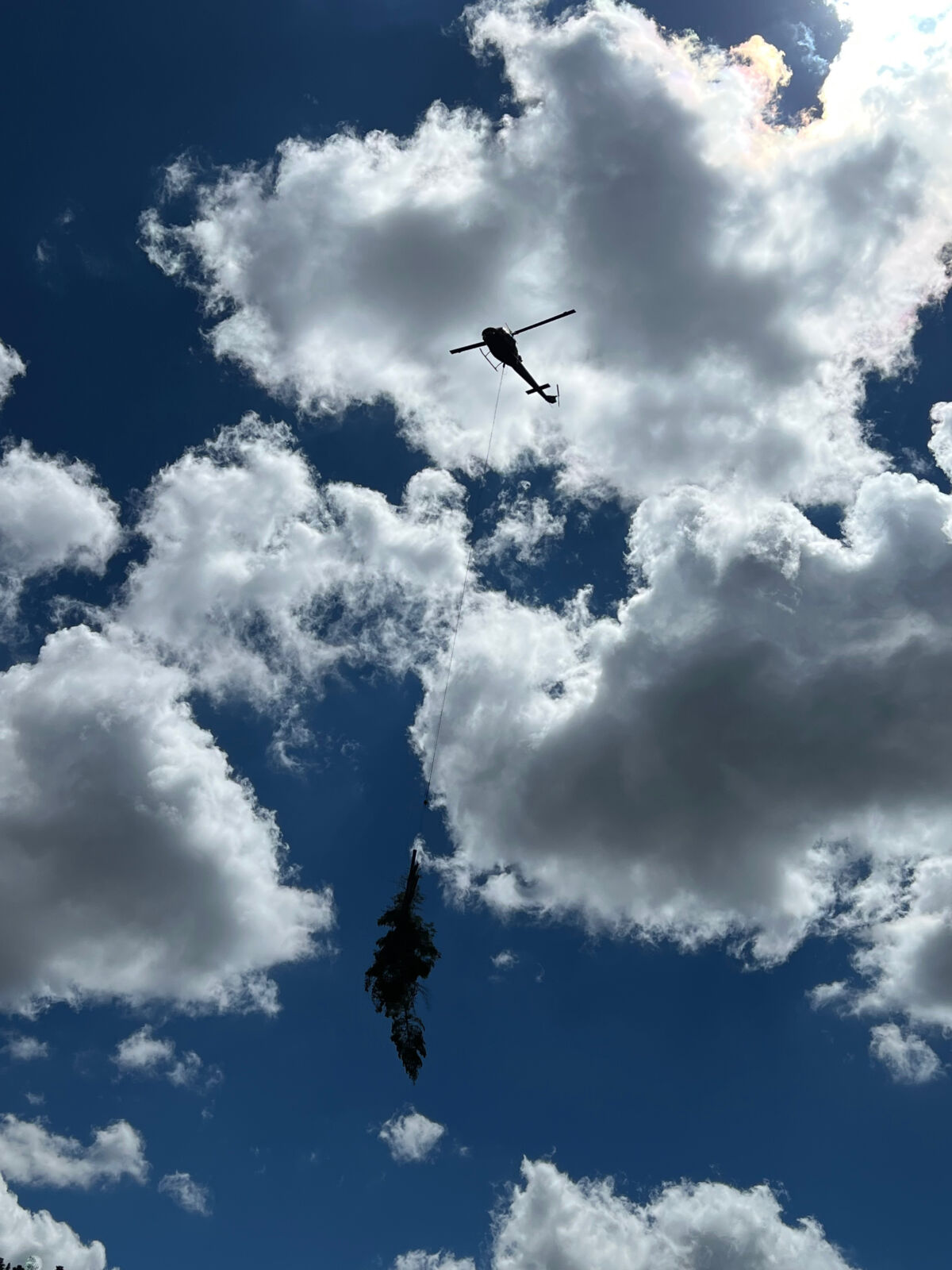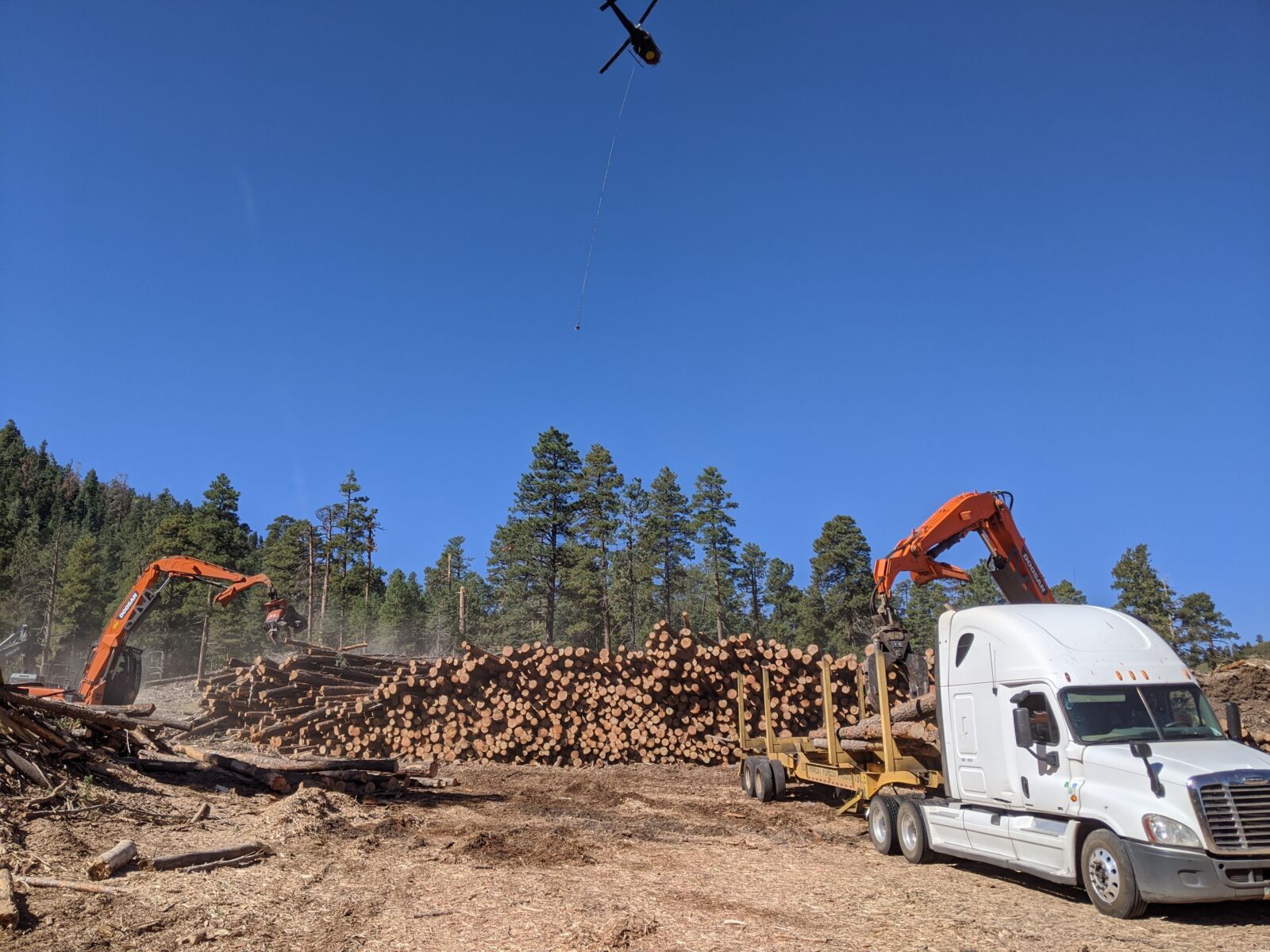Characteristic of many forests across the southwest, Bill Williams Mountain and the surrounding Kaibab National Forest has become increasingly dense due to historic fire suppression policies put in place in the early 20th century.
Prior to these fire suppression policies, wildfire played an essential role in keeping these forests healthy. Historically, naturally occurring wildfires allowed forests to sustain a balanced composition of plants and trees of varying species, age, and spatial structure. However, wildfire suppression has created forests with an unhealthy number of trees and increased biomass on the forest floor. As a result, these forests are susceptible to more intense wildfire, which often burn with increased intensity compared to the naturally occurring wildfire of the past.
Bill Williams Mountain.
Following these intense wildfires, one particular threat to the public is the increased likelihood of severe flooding and landslides. Steep mountain slopes are especially prone to these erosion events, and many forest contractors are focusing on projects surrounding mountains adjacent to cities and other infrastructure.
The city of Williams, Arizona, which is only four miles away from Bill Williams Mountain and the Kaibab National Forest, is one example of a town at serious risk of severe flooding and landslides in the aftermath of wildfire.


Helicopter picking up and flying out trees. Photos by Caio Vissicaro.
To help mitigate the potential impacts of wildfire on steep slopes, the NFF partnered with the Kaibab National Forest, Coconino County, and the Arizona Department of Forestry and Fire Management to implement a multi-year project on Bill Williams Mountain.
Steep slope forest restoration is incredibly costly and complex, but needed. Rocky, inaccessible parts of the mountain make a normal ground-based thinning operation impossible. Fuel reduction on steep slopes, like the ones found on Bill Williams Mountain, requires technical operations with specialized methods, including hand thinning and helicopters to remove fuels from the mountain.
After hand thinning, helicopters pick up the cut material and bring it back to the landing downhill from the project site to process trees into logs for wood products, and smaller diameter wood into chips for renewable energy.

Landing area used to process trees dropped by helicopter.
This project began in 2019 and is currently in the third phase of operations, completing treatment on 476 acres. Several more phases of this work will continue to treat roughly 1,200 additional acres in the years to come. Besides mitigating the impacts of wildfire, the treatment will benefit native wildlife species and improve overall forest health.
Before previous phases of work.
After previous phases of work.
Click here to learn more about the Bill Williams Mountain Steep Slope Restoration Project!
Cover photo by Caio Vissicaro.
--------
You certainly know that wildfire is an important part of healthy forests, and the NFF works hard to keep it that way. We hope you enjoyed this blog post, and we invite you to become a vital part of our mission by making an unrestricted gift today. Your support goes to the programs, people, planning, and persistence that enable the NFF to work on the most challenging conservation issues we face. Please give today by simply clicking here. Thank you!

